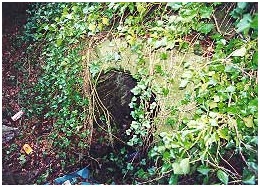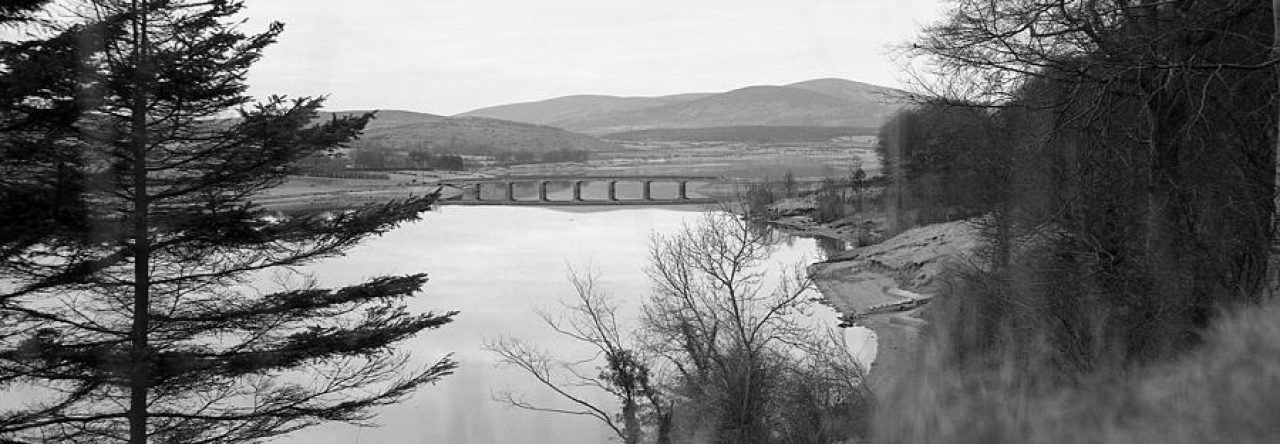The ancient Celts were rural people and very much in tune with their natural surroundings. When referring to places they would use such terms as: carraig – a rock, ath – a ford, dair – an oak tree, cnoc – a hill, abha – a river, mullach – a summit, coill – a wood, sliabh – a mountain, gleann – a glen, and so on. Instances of this are Cnoc Iarainn-Knockieran (the hill of iron), or Coill Beg-Killbeg (the small wood). Man made objects were rath or lios – a fort or enclosure, baile – a house or hamlet, buaile – a booley or cabin used by shepherds during the summer grazing period. I’m reminded of St. Patrick as a boy minding sheep on Sliabh Mish in Co. Antrim who would have sheltered in a booley. Names of animals were used such as Rath na Bo – the enclosure of the cows, or Doire na Muc – the oak wood of the pigs, on which is sited Michael Dwyer`s cottage. Towering over all our area were mountains such as Suifinn – the seat of Finn Mac Cumhaill or Mullaghcleevaun, from the beautiful Gaelic words Mullach Cliabhain- the summit with a basket-like cleft. Important burials took place on these mountain tops and heaps of stones or cairns mark the burial places.

The Christian era brought its own powerful influence to bear on Irish placenames. Many saints, monastic sites and hermitages are remembered. In our area we have Cill Bhride – the cell or church of St. Brigid, or one of her followers, and Cill Malum – the cell of Malumna. The ancients well understood the importance of a good water supply and their wells were given saints` names in an effort to invoke divine intervention perhaps. The names of St. Patrick and St. Brigid we hear most often, but older residents, especially in the vicinity of Lacken, remember St. Boden’s Well, now sadly under the all consuming waters of the lake.
The Island of Saints and Scholars was ill equipped to meet the savage onslaughts of the Vikings who plundered and pillaged at will. Especially vulnerable were monasteries on the coasts, or on major waterways. Our area was not particularly targeted, but, nonetheless, we have a few reminders of that era. The name of our county, Wicklow, is of Viking origin. As is Arklow and Rathtorkyll near Glending. The last name means the Fort of Torkyll who was a Viking King of Dublin and whose sway extended as far as Blessington.
Next to come were the Normans. They kept to the fertile lowlands, ignoring mountainous areas, which included most of our county. It is no surprise, therefore, That Trim Castle was built in the rich land of Meath or Kilkea Castle in Co Kildare. We have, however in our area a few places named after them. For instance Brittas from the French ‘Bretache’ meaning a temporary stockade. Also Burgage meaning a borough or town. The suffix ‘ton’ or ‘town’ derives from the old Germaic ‘tun’ meaning a settlement. It is common in old leases to come across “the town and lands of” so and so. It would appear that many of our townlands names came about in this way. This is very evident in our neighbouring county of Kildare where so many townlands end in ‘town’.

The ‘pile’ known as Three Castles was built during the later Norman era, by the Fitzgeralds of Maynooth. Instead of three separate castles as the name would suggest, the likelihood is that there was just the one castle with three distinctive parts. The Down Survey map of the mid 17th Century shows this quite clearly. It was built to guard the Liffey from the raids of the hardy mountain clans of the O’Byrnes and O’Tooles. Despite this protection however many a prize herd of cattle was rustled across the ford into the sanctuary of the Wicklow Hills. At one time ‘a black rent’ was paid to the hill men in an attempt to keep them away. To strengthen resistance other measures were taken to hem in the Gaelic clans on the mountain side of the river Liffey. Foreign soldiers known as Galloglaigh were imported from Ulster to defend the Pale. The Galloglaigh depended mainly on farming to support themselves. They had been given grazing rights in the uplands where they built summer shelters for those minding their sheep and cattle. Thus we have the town lands of Ballinoulta, and Ballydonnell, meaning the booley of the Ulsterman and the booley of McDonald. Was Ballyward another booley, Buaille an Bhaird, booley of the ward or guard?
Next to hit West Wicklow were the English and Scottish settlers, mainly during the 17th Century. We can be sure that the colonists would in many cases have renamed their new possessions. Were Russelstown, Dillonsdown, Edmondstown, Wolfestown, Piper’s Hall, Hempstown, Walshestown et cetera of Norman, post-Norman or Cromwellian times? One thing is certain that names were always changing. Names such as Haylands, Old Paddocks, Deerpark, Blessington Demesne, Red Bog, Furry Hill were possibly of the 17th Century. Great changes were wrought by the newcomers. Farms were fenced off and fields enclosed. Drainage was improved by digging dykes to make ditches. On top of the ditches were sown quicks to keep in sheep and cattle, and also to provide shelter. Rows of trees such as oak, beech and Scotch fir were sown. Later on would be constructed large country houses, with their walled gardens, stables and out houses. Improved breeds of cattle were introduced from the sister island. Farming methods generally were better. But at what cost to the old inheritors of the land
Meanwhile, up in the foothills the native Irish held on. Their marginal land was not much wanted by the newcomers. They viewed the new arrivals with enmity, who took possession of their property, spoke a new language and had strange ways. As long as they paid their rent they were relatively unmolested, and so their place names remained as they were from time immemorial. In these areas there is a preponderance of names beginning with ‘Bally’, signifying a booley. Such names are:- Ballynasculloge, Ballynatona, Ballysmuttan, Ballynabrocky, Ballyknockan, Ballynastockan and many more. These people reared small hardy black cattle on the hills, cut turf and farmed their smallholdings, eking out an existence as best they could. Many lived together in little hamlets known as clachans. As land got scarcer they moved up and up the hills until the bare rock would yield nothing more.
Some place names are not easy to decipher. One such is Crosscool Harbour. In the 18th Century it was referred to as Crosscold Harbour. ‘Cross’ most likely meant ‘Church’ Land. In England the name “Cold Harbour” is known as a place of refuge for travellers having no provision for food. We could speculate that a resting place here facilitated pilgrims on their way to Glendalough.
An effort was made in the 19th Century to anglicise Monaspic (Bishop’s Land) to Mount Aspect. Thankfully this name did not persist. The name Blessington presents a quandry. A Gaelic scholar of old made a case that it was derived from the town land Baile Coimin (Comyn having been a Bishop in the 12th Century and having been granted much of the present West Wicklow). The thinking was that there was a mix-up between Comyn and Comaoin (a blessing) and that Richard Boyle with his regard for the Irish language named his new town “The town of a Blessing” or Blessington. It would be a combination of English and Irish words. Obviously very improbable! The more likely origin of the name is that Bishop Boyle called it after a place or person that meant something important to himself.
In my home village of Dromahair a Franciscan Abbeywas founded in 1508. (It provided a wonderful play area for us children in the 1940’s and ’50’s.) The adjoining townland is known as ‘Friarstown’. Similarly in the 17th Century the new urban creation of ‘Blessington’ came into being, to use modern terminology “on a green field site”.
Since the formation of our Free State we have had many name changes. For instance, ‘Kingstown’ reverted to its former name ‘Dunlaoire’, ‘Queenstown’ became ‘Cobh’, ‘Maryborough’ became ‘Portlaoise’. Railway stations were renamed after patriots of 1916. (No one wanted to claim Mountjoy. Who would want a prison called after them, I suppose.)
And so to the present day. Over the past number of years we have had a proliferation of estates in and around Blessington. Such names as Rockypool, Westpark, Beechpark, Blessington Abbey, Burgage Manor, Piper’s Stones etc. have appeared. Like all those who came here in the past, the residents of these estates will also make their mark and will eventually fit in and become part of what we are.
And so the story goes on.
Any comments or questions would be welcome – contact me here.


Patricia Thomas
Jim, the paragraphs on “Next to come were the Normans” left me with so many questions, especially about the Gallowglass (Galloglaigh) and the connection with Ballydonnell, Ballylow, etc. But many questions about those native Irish who stayed up in the hills, raising their small black cattle. And I wonder where the Carneys fit in there. Thank you for this excellent essay. Pat